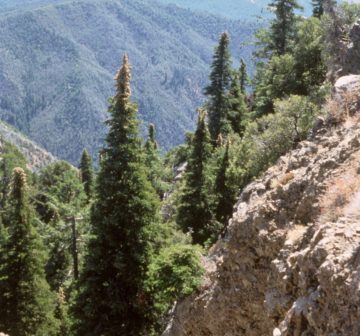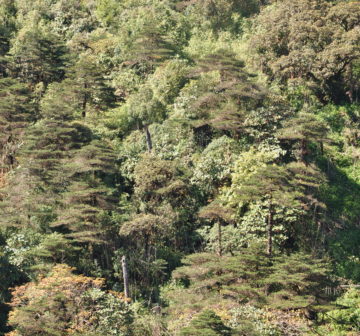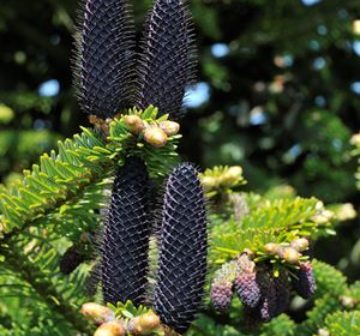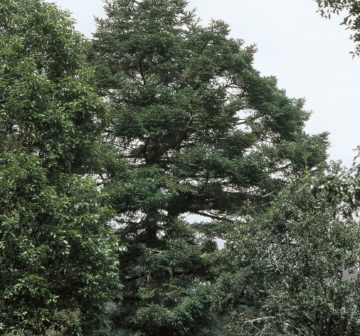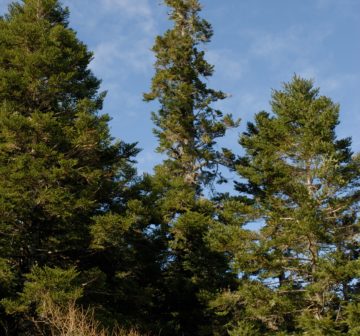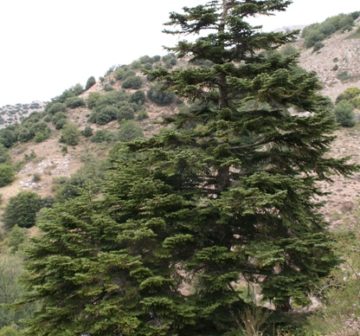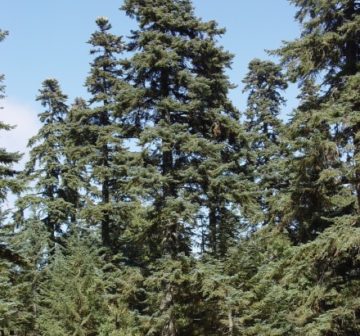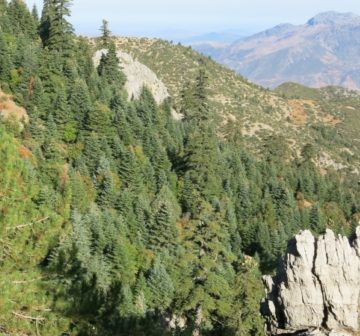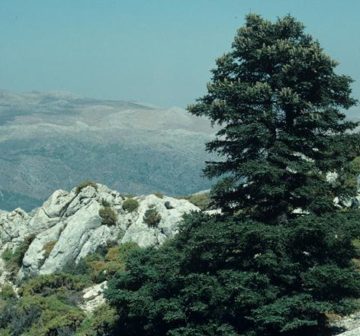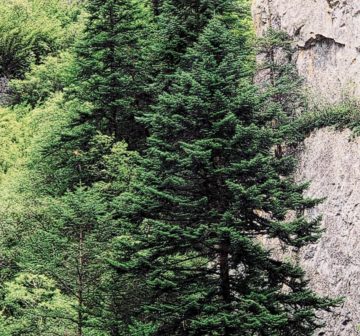Categories · Threats
Unnatural
Although fire forms an integral part of many conifer ecosystems, human activities may lead to an increase or decrease in their frequency and intensity and the natural processes are disrupted. Fire suppression policies can result in catastrophic wildfires over very large areas, while an increase in fire frequencies prevent forests re-establishing as the regenerating trees are burnt before they can mature.
Regional droughts associated with climate change compound the problem: in the southwest USA recently burnt forests are unlikely to regenerate for several centuries. Vast areas of New Caledonia, one of the world۪s most important locations for conifer biodiversity, have been totally modified by fire which has affected many of the 41 endemic conifer species. Members of the Cupressaceae are particularly vulnerable to the effects of fire due to their preference for drier habitats and the effects of unnatural fires can be seen in their habitats in southern Europe and North Africa, Australia, Southern USA and northern Mexico. In moister, temperate areas fire can also have devastating effects: in Chile; large areas of the coastal populations of Fitzroya cupressoides have been destroyed by man-made fires in the mid 19th century and more recently in the last 10 years over 10,000 ha of Araucaria araucana forest have been destroyed by fire.
There are 112 taxa in the category – Fire, Unnatural:
Page 1 of 12 pages · next page >
Download full list of taxa in this category as CSV
Page 1 of 12 pages · next page >
